Berlin’s public transport system operates very well and efficient during the day and at night.
It is affordable, straightforward, usually punctual and very comprehensive.
Learn how its extensive and integrated network works to get the most out of it.
The types of transportation in Berlin
The transportation system in Berlin consists of Buses, Tram (Tram), U-Bahn (Subway) and S-Bahn (Train) and The Regional Train.
While the U-Bahn lines serve more the city of Berlin, the S-Bahn goes little beyond its borders and reaches nearby cities like Potsdam, for example. The streetcar and subway streetcars travel on rails through the streets and their lines run only in the eastern part of the city.
The BVG (Berliner Verkehrsbetriebe) company operates the U-Bahn, bus, tram and metro tram, while the Deutsche Bahn operates the S-Bahn. However, this does not affect the user, since all these modes of transport are integrated and the fare is unified, i.e., when you buy a ticket, you can use it on all transports.
The U-Bahn has 10 lines and the S-Bahn 15 lines, while there are 22 Tramlines and more than 100 bus lines circulating in the city.
Tram
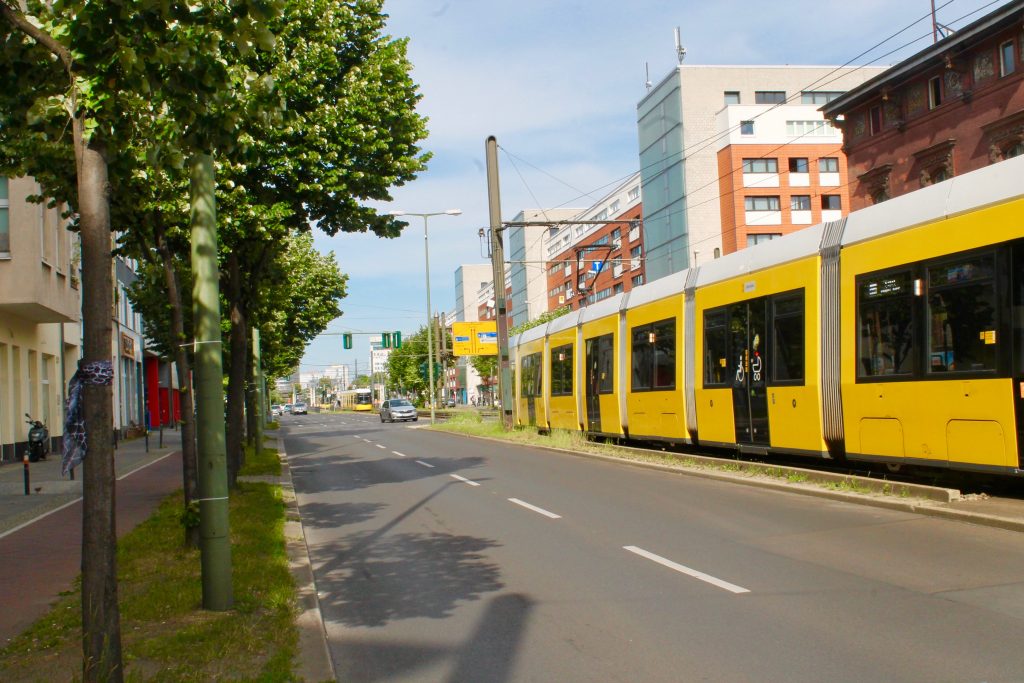
There are more than 20 tram lines in Berlin. But they are mostly in the eastern part of the city.
This is because when the city was divided by the wall, the western part wanted to be more modern and believed that the Tram was something old-fashioned and tore out the lines. Today it is planned to return with them.
The Trams are very frequent in Berlin during the week and their timetables are displayed on the board at the stops. This way you can know how long the wait will be.
If you didn’t buy your ticket, you can buy it inside the Tram on this machine that if you get confused with it, don’t worry. 99% of the tourists do too because you have to choose the type of path you are going to use.
If you already have the ticket, just validate it in a machine available inside the Trams.

U-Bahn
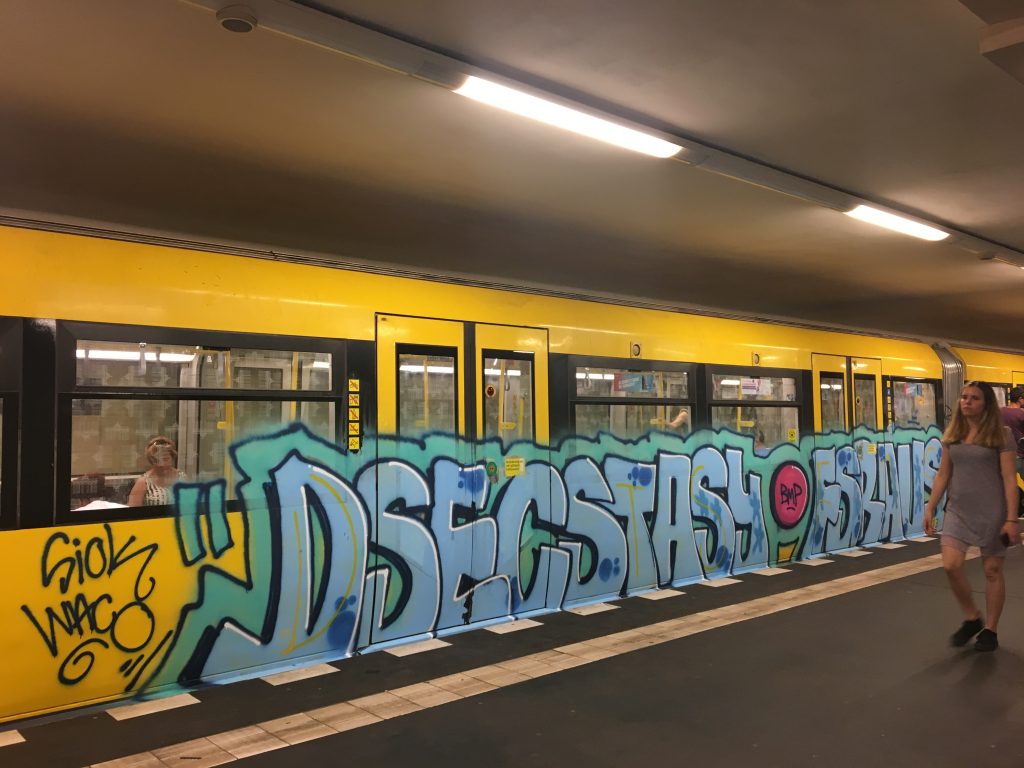
To recognize a U-Bahn station, just find these signs with the U on them.
The U-Bahn, the subway in Berlin, has 10 lines, runs along with a 146-kilometre route network, which includes 173 stations.
Its characteristic feature is the yellow colour of the trains. Most of the lines run underground, but some and some stretches also run on the surface.
At some times it gets really crowded, but if you are just visiting the city, you won’t need to fight with people going to work, will you?
The ticket can be easily purchased at the machines in the subway stations. Never forget to validate before using it. There is no one to sell the tickets, but there are people who control the transport randomly, and if you don’t have the ticket, you will be thrown off the transport (how embarrassing) and you will pay a fine of €60.
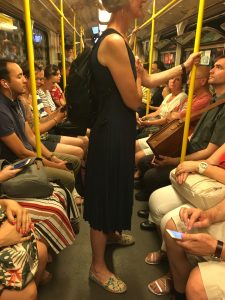
There are also the elevators for those who need to avoid the stairs at the entrances to the U-Bahn.

S-Bahn
Train stations are identified by the S. And you need to see the platform of the place you want to go to and the direction. (Richtung).
The S-Bahn is the urban express train. Together with the Regional Train, they belong to the Deutsche Bahn. They are faster than the U-Bahn when the distance is longer because they stop less. So even within the city, when you need to travel a longer distance, for example from Alexanderplatz to Savignyplatz, the best way is the S-Bahn.
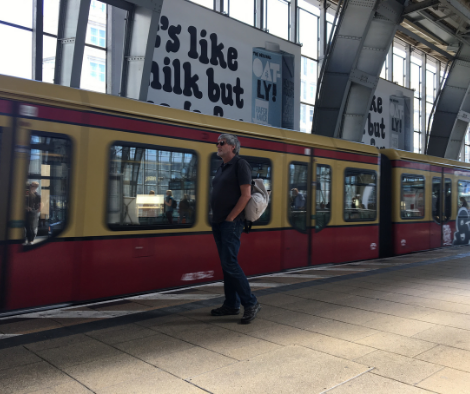
The S-Bahn connects all major train stations in Berlin and the main train station in Potsdam. It also goes to nearby cities in Berlin. You can use the S-Bahn with your bicycle. Just pay the bicycle fare, too. This way you can go on more varied nature hikes.
You buy the ticket from a machine at the stations and once again I insist, don’t forget to validate before you start your trip.




Regional Train
Other possibilities that are faster and much more comfortable for cities near Berlin and even from Berlin Brandenburg Airport (BER) to the centre are the regional trains R. However they are not as constant as the other transports and stop only at major stations. So if you plan to use the Regionals, look at the exact timetable of each one beforehand.
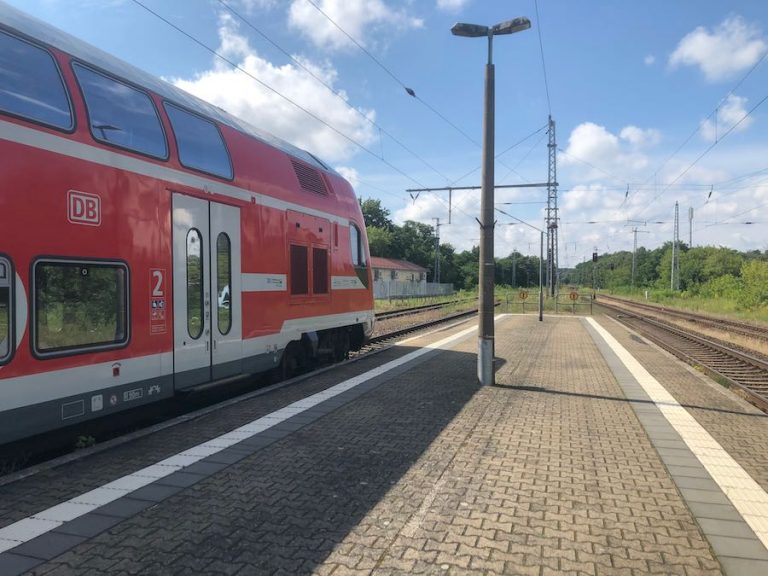
Bus
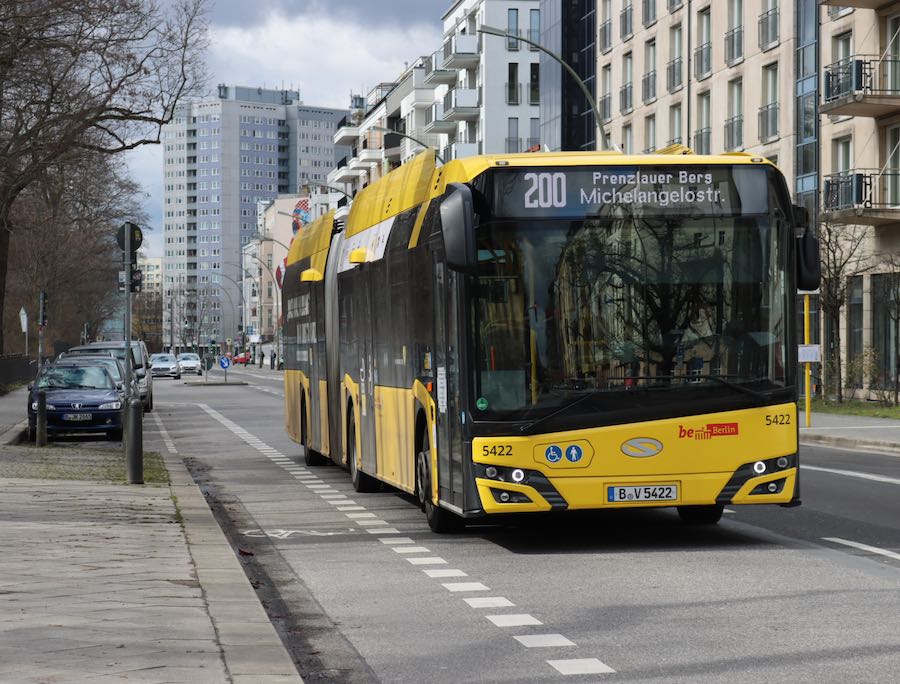

This is the 200 bus. Its fleet is now completely electric, i.e. sustainable. The 200, together with the 100, is the most economical way to get around much of central Berlin. That is because along the route of both lines are about 30 of the most famous sights of the city. So if you buy, for example, the day or week ticket, you can simply get off the bus, get to know what you want better and return to the route. Or also walk from one station to another.
Tickets can be bought directly from the driver. (Not durant COVID-19 pandemic) The stop is easily identified by this H and on the poles, you will find tables with timetables and the lines that pass by that point. The transportation is very punctual and if there are delays, they are small – in Germany 5 minutes is already an unacceptable delay.

You don’t have to signal with your hand indicating that you want to get on the bus. They stop at every stop when there are people on the bus.
Zones ABC - What is it?
The difference between AB and ABC, is the division of Berlin into three zones, A, B and C. AB is the central zone of Berlin, and if the tourist doesn’t intend to go beyond the city, he doesn’t need to worry, because he will do everything within AB.
Zone C is a little further away from the centre, and neighbouring cities such as Potsdam, Oranienburg, and Berlin Brandenburg Airport (BER).
Where can I buy tickets for public transportation in Berlin?
In addition to the machines at the U-Bahn and S-Bahn stations, and on the buses directly with the drivers, and at machines inside the Tram, it is possible to buy at some sales points, for example at Alexanderplatz or at the Hauptbahnhof.
There are also options for those who are sightseeing in Berlin to buy tickets in combination with attractions.
At night and on weekends
From Monday to Friday, the S-Bahn operates until about 1h /1h30 and the U-Bahn operates until about 1h.
The Tram operates 24 hours, at 30-minute intervals, starting at 0.30 am.
Night buses: The most important U-Bahn lines have equivalent night bus lines. These are the night buses identified by the letter N.
On weekends, Friday-Saturday nights, Saturday-Sunday nights, and before public holidays, the S-Bahn and U-Bahn services also operate at night. Night buses run all night as well.
The S-Bahn operates 24 hours, at 30-minute intervals throughout the night.
The U-Bahn runs 24 hours, at 15-minute intervals during the night. Exception: the U-Bahn lines U4 and U55 are not served.
The Tram runs 24 hours, at 30-minute intervals, starting at 0.30 pm.
Map of public transport in Berlin
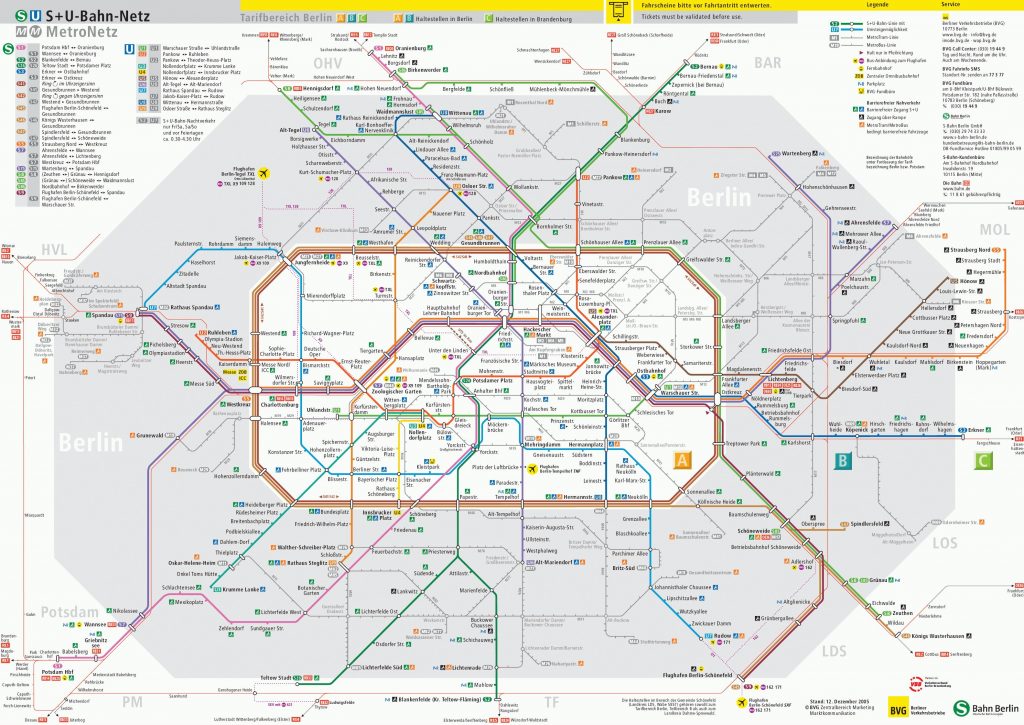














One Response